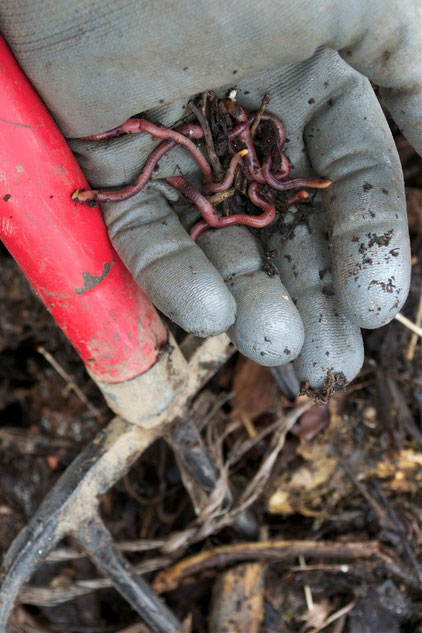Invasive Earthworms

Earthworms are so ubiquitous here in North America that we take them for granted. But chances are that if you live in the US or Canada, many of the earthworms you see are not native species.
According to Wikipedia, of the 182 taxa of earthworms found in the United States and Canada, almost 33% are invasive species, being primarily from Europe and Asia. When they become too abundant, these non-native earthworms can lead to reductions in native plants species and some trees.
Native plants in the northeast evolved without the presence of earthworms, and Northeastern forests have a characteristically thick layer of leaf litter and organic matter. Many native plants require this organic layer for their seeds to germinate. But some species of earthworms will consume this critical layer.
Asian Jumping Worms (Amynthas spp.) also known as snake worms or crazy worms, are an invasive earthworm introduced to North America from eastern Asia. When jumping worms consume the upper organic layer of the soil, native plants may slowly disappear and invasive species take their place. As the forest floor structure changes, other species are negatively impacted, such as ground nesting birds, amphibians, and invertebrates.
Other types of invasive earthworms burrow down depositing much of the decomposing organic nutrients from the soil surface down below the reach of the plants roots. By redistributing nutrients, mixing soil layers, and creating pores in the soil, they are also affecting the characteristics of the soil important to the rest of the ecosystem.
The Nightcrawler (Lumbricus terrestris), the large reddish worm species many of you know, is actually a native to Europe and is considered an invasive species in the north central United States.
The earthworms shown above are Red Wigglers (Eisenia fetida), and like the Night Crawler are also native to Europe. These worms thrive in rotting vegetation and manure. These were added by us to our compost piles to help break up the plant waste. They are rarely found in the soil.

